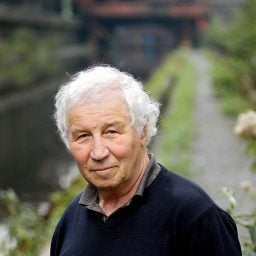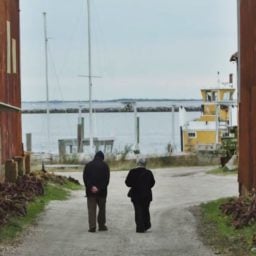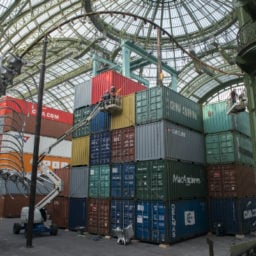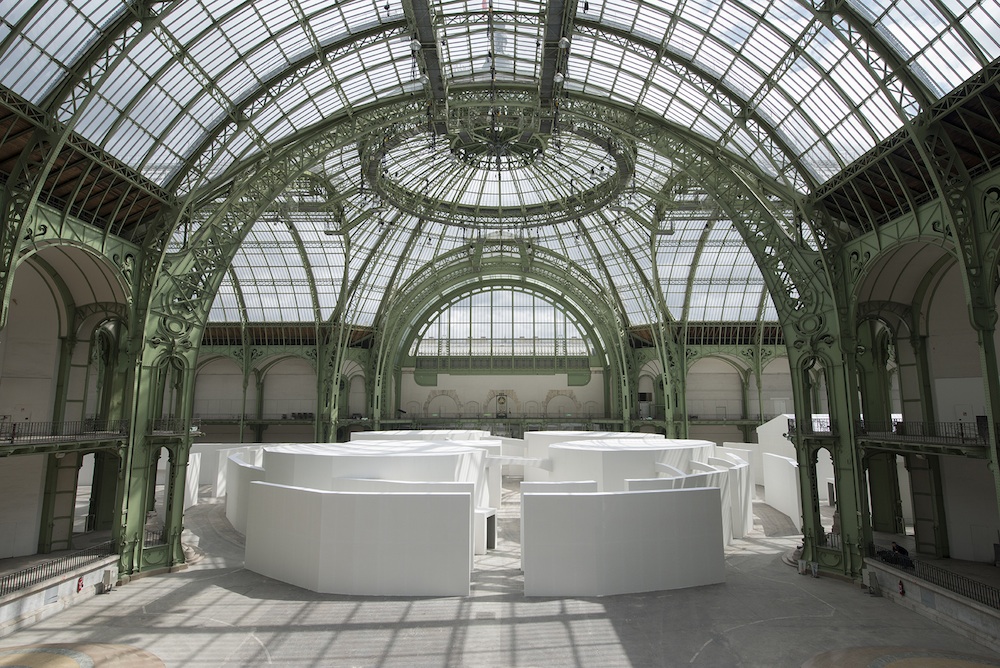

It always hurts a little to see heroes fail. Ilya and Emilia Kabakov, Russia’s most celebrated conceptual artists, and instrumental figures in the development of installation art, seemed like the perfect choice for Monumenta, the prestigious annual commission for the nave of the Grand Palais in Paris. The artists’ unique command of the subtle art of the mise-en-scène, and their poetic sense of humor, should have allowed them to tame the dauntingly vast space. It didn’t.
The Strange City is the sixth in a series of large-scale commissions previously undertaken by Anselm Kiefer, Richard Serra, Christian Boltanski, Anish Kapoor, and Daniel Buren. It is also the Kabakovs’ most ambitious installation to date. At the press conference, curator Jean-Hubert Martin described the exhibition’s main axis as “the metaphysical.” “The sacred, the spiritual, the hereafter, death,” he went on to explain. And indeed all these grand concepts are to be found in the artists’ “city” (or rather, hamlet) again, and again.
Having walked past a colorfully lit cupola suspended from the ceiling—vaguely redolent of the Grand Palais’ iconic 19th century glass architecture–visitors encounter five freestanding rooms: The Centre of Cosmic Energy, How to Meet an Angel, The Gates, Manas, and the Empty Museum. The show catalogues ways humans have attempted to reach a spiritual dimension. The “angel” room is dominated by the large model of a man atop a rickety, out-of-scale construction, his arms thrown upwards. Coming from above, an angel reaches out as if about to embrace him. Visual renditions of a spiritual quest rarely get more explicit.
In The Gates, we are informed by a prominent wall text that a threshold is “an image for the end of life.” It is unclear if this comes from the artists themselves or well-intentioned museum employees, but here, like in most of the exhibition, hardly any room is left for more open-ended interpretations. The large sculpture of an open door stands in the center of the installation, surrounded by paintings of more doors in a declension of colors, a sort of impressionist take on the inevitable end point. More drawings and models address the same idea, with a few variations but little development.
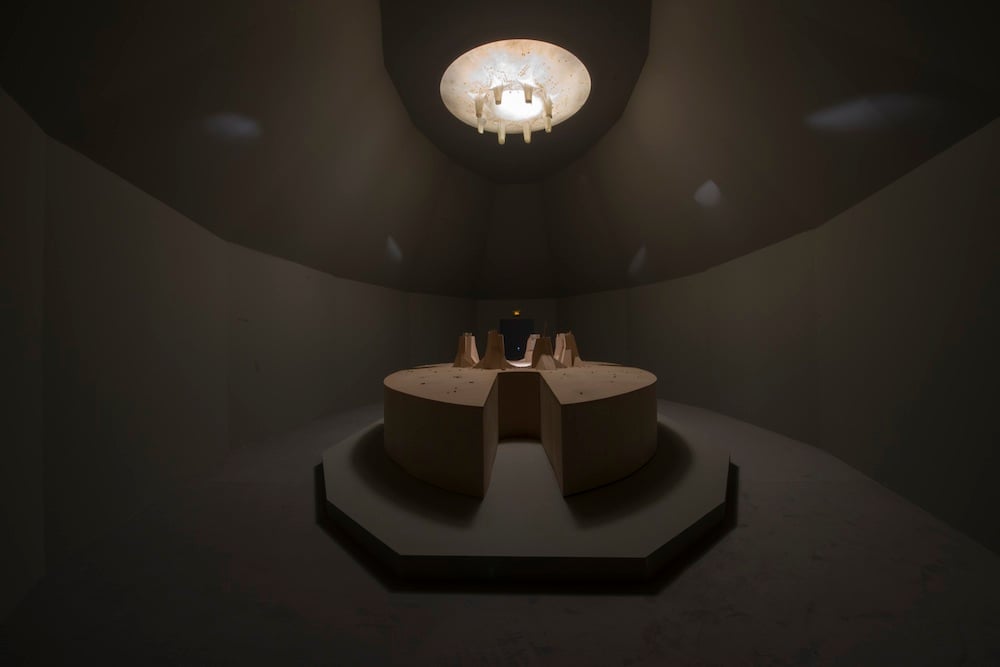
Monumenta 2014
Ilya and Emilia Kabakov, The Strange City
Photo: Didier Plowy for la Réunion des musées nationaux, Grand Palais
This is surprisingly atypical. The thrill in many of the Kabakovs’ best-known installations lies in absences. In the seminal The Man Who Flew Into Space From His Apartment, executed by Ilya Kabakov in 1984, before the artist left the USSR for the West, the man of the title is nowhere to seen. Likewise in the more recent The Happiest Man (2000), presented last year by Sprovieri Gallery in London, viewers find themselves in the den of an unknown character; the only horizon is a loop of movies from the Soviet era. In these pieces viewers are intruders, bursting into spaces they feel they shouldn’t enter, piecing together clues left for them by the artists.
By contrast, most of works on show as part of The Strange City are agonizingly didactic. In The Centre of Cosmic Energy is displayed a collection of (yet more) models staging how cultures, real or invented, have tried to pick up signals coming from above. These are echoed in the Manas room, mapping the eponymous mythical Tibetan city, which has the particularity of being mirrored in the celestial sphere. A maquette of Manas stands prominently in the middle of the room, surrounded by smaller models of the apparatuses devised by the inhabitants to communicate with the city’s cosmic double.
The Empty Museum is a rare moment of brilliance. The walls are painted a National Gallery–like crimson, the Neoclassical door frames, gold. Instead of the marbles and oils on canvas expected in such an institutional environment, J.S. Bach’s Passacaille is piped in. Perhaps the element in the show most resembling some of the Kabakovs’ older works, the Empty Museum tentatively offers a space to reflect on what it means to show art, and its corollary, to experience it.
Religion itself appears surprisingly late in a show so obviously tackling all things spiritual. Slightly separated from the rest, the last two rooms have been named the White Chapel and the Dark Chapel, the latter described by curator Martin as the exhibition’s “climax.” In the “White Chapel,” square painted vignettes display at irregular intervals inside a grid covering the white walls. Some are paler than others, receding into nothingness like fading memories. The “Dark Chapel” gathers six recent paintings by Ilya Kabakov; they picture snippets of images–photographs, most likely. While the face of Emilia seems to be smiling on some of them, the others are unidentified, actors of a life we will learn nothing more about. Positioning the chapels at such a strategic place at the end of the exhibition, the Kabakovs seem to suggest art is the only possible answer to the mystical questionings inherent to the human condition.
For all its heavy-handed messages, the most disappointing aspect of The Strange City is its near total failure to address the unique space of the Grand Palais. All the artists previously involved tackled it up front, albeit with varying degrees of success. Here the focus is so intensely on what’s inside each room that the architecture of the installation itself verges on irrelevant. Conceptually the cupola adds very little. It almost feels like an afterthought—and the other displays could easily have been shown in a more conventional environment without losing much of the idea. The Kabakovs’ largest installation ever is also a missed opportunity on a grand scale.


